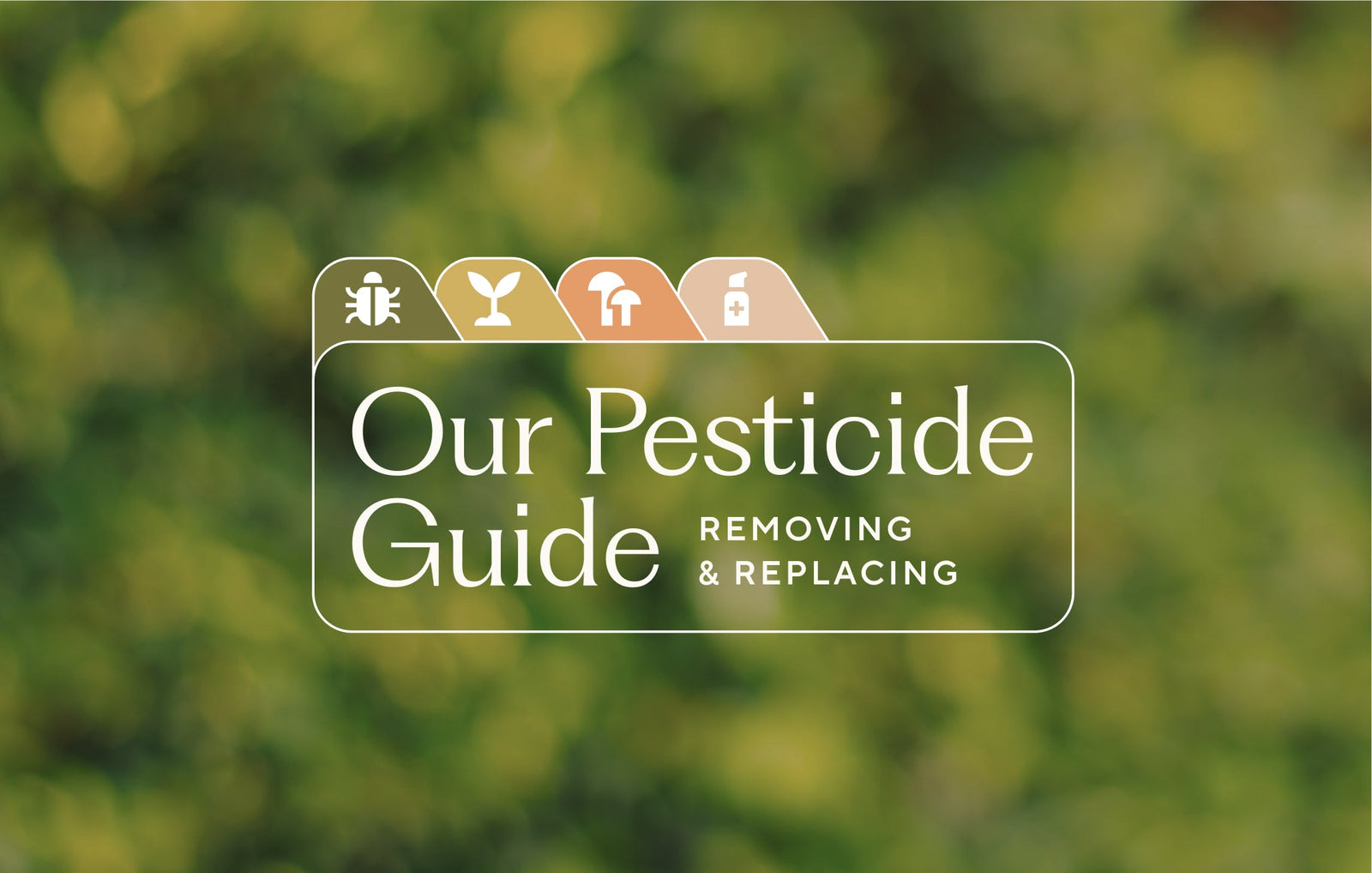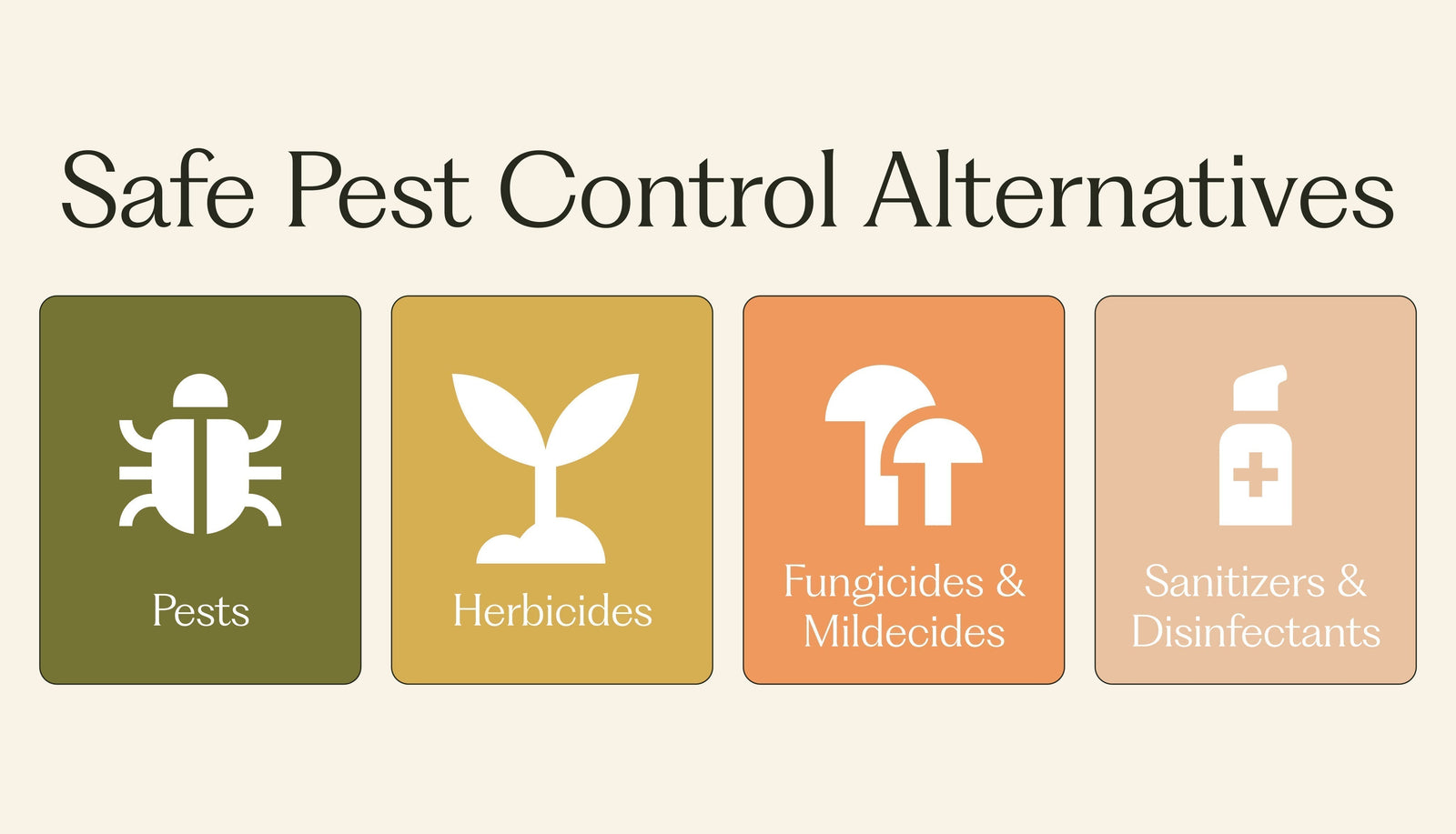How to Remove Pesticides from Your Home in 8 Simple Steps

What are pesticides?
Pesticides are considered to be a universal sensitizer by the CDC (Center for Disease Control), which is a chemical that can make a person sensitive to all harmful chemicals if there is a big enough exposure.
Removal or reduction in exposure to pesticides is an important proactive move for your family’s health.
Why are pesticides so dangerous?
Of all the chemicals we are exposed to, pesticides are absolutely the most dangerous.
Removing them from your diet and home is a great first step in creating a healthy environment and immune system.
Dr. Sherry Rogers, M.D., author of Detoxify or Die has stated that, “the number one culprit that has damaged the largest number of people has to be pesticides.”
Pesticides are classified as both VOCs (volatile organic compounds) and SVOCs (semi volatile compounds).
They can cause damage via ingestion through non-organic food, via inhalation of vapors (VOCS), and through exposure to contaminated dust (SVOCS) after use.
Young children who may be in close contact with floors and contaminated surfaces are especially at risk.
Just having these products under your sinks and in cabinets results in an exposure to the pesticide through the release of VOCs from the containers, creating a low level pesticide exposure throughout the home.
Pesticides used in lawn care also increases exposure to pesticides.
Acute symptoms from pesticide exposures may include headache, dizziness, respiratory difficulty, muscular weakness, and nausea.
Pesticides are considered endocrine disruptors, carcinogenic, and neurotoxic.
In addition, pesticides can even cause genetic damage, setting the body up for future disease. Children are especially vulnerable to pesticide exposure.
If you’d like to know more about the differences between children and adults when it comes to pesticide exposure, read the EPA publication “Play It Safe”.
The good news is, pesticides are a category of chemicals that you can start removing right away.
You can dramatically improve your air quality once you learn how to remove pesticides from your home.
How to remove pesticides from your home
Here are the steps we recommend taking to give your body a break from this treacherous immune stressor:

1 - Eat organic
Whenever possible, eat organic foods to reduce pesticide exposure in your diet.
We recommend organic food, whether you are eating plants or animal products.
Conventional meats come from animals that are fed GMO feed and are raised with growth enhancing hormones that cause reproductive and metabolic problems in people.
In some areas it is difficult or too expensive to buy all organic produce.
Use the Environmental Working Group’s Shopper’s Guide to Pesticides in Produce - the Clean Fifteen and the Dirty Dozen to help you make the best decisions possible.
If you do buy conventionally grown fruits and vegetables, be sure to wash them well before using and remove skins if appropriate.
Have you heard of organophosphate pesticides?
They are one of the most commonly used classes of insecticides in the U.S. and are found on a wide variety of crops.
Organophosphates are neurotoxins that have been associated with lower levels of testosterone and other sex hormones, according to the Pesticide Action Network of North America.
Mothers exposed to organophosphates while pregnant also experience increased levels of cortisol (a stress hormone), which can increase the risks for miscarriage, preeclampsia, and developmental delays for the child.
A review by the USDA found unacceptable levels of pesticide residue in many baby foods.
The easiest way to avoid organophosphates is to go organic, as organic farmers are prohibited from using synthetic pesticides on their fields.
2 - Remove pesticide products in your home and your attached garage
Removing pesticides from your living environment will immediately improve your home’s air quality.
Take all sprays, strips, foggers, or bombs for bee, ant, wasp, roach, spiders out of the house and attached garage.
Dispose of them appropriately. Learn more in our pesticide guide here.
3 - Consider organic bedding and linens
Seek out USDA certified organic textiles, which must be grown without synthetic pesticides or fertilizers.
Organic cotton is an especially green choice because regular cotton is one of the most pesticide intensive crops.
Important cost consideration note: If you sun new conventional sheets, blankets, and towels and then wash them in a safe product like Branch Basics Concentrate or Laundry Detergent, this helps to volatize and break down the pesticides out of the fabric.
If you desire to go organic, many stores now carry organic bedding. For example, Bed Bath and Beyond has many organic options.
4 - Stop toxic extermination of your home
- Switch to natural and safe methods of pest control and management using our guide. Choose Integrative Pest Management (IPM), which focuses on eliminating the causes of pest infestations.
- Keep pests out — Seal all cracks you can find into your home. If pests can’t get inside, then you won’t need to use any pesticides to kill them.
- Starve and dry pests out — Keep your house very clean and eliminate pest access to food and water.
- Eliminate safe havens for pests — Roaches can live in any nook and cranny. Seal up any small cracks leading to a spot that people can’t access.
- Treat existing pest problems — To get rid of existing pests, use traps, vacuums, gels and baits.
- Contact non-toxic pest control services and tell them you want completely not toxic, not “least toxic”, pesticide options. In particular, beware of pyrethoid, pyrethrum, and permethrim-based pesticides, as they are often touted as natural. These are dangerous pesticides and have damaged many children.
5 - Do not chemically treat your lawn
Avoid chemically treated lawn care altogether.
Lawn care pesticides have been linked to childhood cancers, learning disabilities, asthma, neurological damage, and developmental delays.
Glyphosate is the chief ingredient used in America’s most popular herbicide, Monsanto's Roundup, and has been linked to birth defects, DNA damage, hormone disruption, cancer and neurological disorders.
Ditch this weed killer for good.
Get rid of weeds naturally using boiling water, vinegar, salts or pulling them out by hand.
If you are looking for non-toxic lawn care products, check out Sunday or Medina, which provides lawn care products that are safe and will produce a beautiful lawn.
6 - Protect your kids - Do not use toxic insect repellents
Most insect repellents contain DEET (N, N-Diethyl-meta-toluamide).
One-third of all Americans use this repellant, which has been shown to be toxic to the central nervous system.
Natural insect repellant solutions exist.
Otherwise, candles with eucalyptus oil or citronella oil in the area are helpful.
You can also add these live plants in the area where you spend time outside, like a deck or patio. The natural fragrance repels mosquitoes and other pests.
7 - Protect your pets – avoid tick and flea collars
Your flea and tick collars may be killing your pets.
Flea collars leave a toxic residue that affects not only your pet, but also your children and anyone else that comes in contact with the pet.
Use non-toxic methods for fleas and ticks like Only Natural Pet.
8 - Become an informed consumer and stop buying pesticides
You can make the personal choice for your family to remove pesticides from your home and stop buying them.
Even better, contact your local government to request the use of only safe pest control.
Do what you can to discourage the use of unnecessary or unsafe pesticides in parks, schools and other public places.
Resources:
Learn more about non-toxic pesticides with our friends over at Non-Toxic Neighborhoods!
Further reading:
More resources on pesticides:
- 5 Natural Pesticides That Really Work
- Common Household Chemicals to Avoid
- Safe, Easy & Effective Way to Get Rid of Roaches
- Integrated Pest Management: An Inexpensive, Safe, & Sensible Way to Avoid Pests
Categories

Marilee Nelson
Marilee Nelson is an Environmental Toxins expert who has spent nearly 30 years advocating for the chemically-sensitive and chronically-ill. She is a Board Certified Nutritionist, Certified Bau-Biologist and Bau-Biology Inspector and specializes in Food As Medicine. She has helped thousands of families and individuals identify, heal and recover from toxic exposures and is on a mission to revolutionize the way American families view their health.









